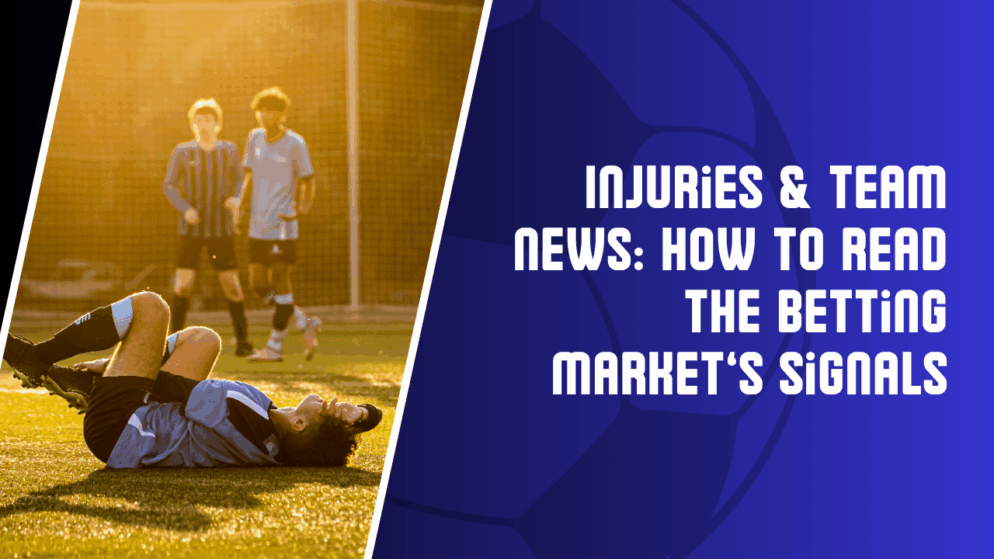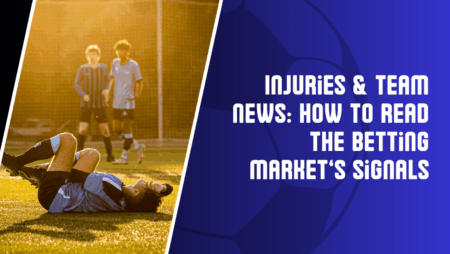

The betting market is a sophisticated ecosystem where information flows faster than mainstream media can report it. Smart bettors understand that injury reports and team news don’t just affect game outcomes—they create ripple effects throughout the betting markets that savvy observers can decode for profit.
Understanding Market Movement
Betting odds are essentially a real-time reflection of collective wisdom, money flow, and insider information. When a star player’s injury status changes, the market responds immediately, often before official announcements reach the public. Sharp bettors monitor these movements religiously, treating odds fluctuations as valuable intelligence.
Significant line movement without obvious public information usually indicates that professional bettors have acted on inside knowledge. A football spread moving from -7 to -4.5 within minutes often signals that key players may be unavailable, even if injury reports haven’t been updated.
The Hierarchy of Information Impact
Not all injuries carry equal weight in the betting market’s calculations. Quarterback injuries in football create massive line swings, while a backup linebacker’s absence barely registers. Basketball markets react strongly to star player news, but football’s team-oriented nature means some positions matter more than others.
Understanding positional value helps bettors gauge whether market reactions are proportionate. A starting point guard’s injury might move a basketball line by 4-6 points, while a backup center’s absence might only shift it by half a point.
Timing Is Everything
The betting market operates on different timelines for different information types. Official injury reports typically surface 24-48 hours before games, but smart money often moves earlier based on practice reports, beat writer observations, and insider whispers.
Late-breaking news creates the most dramatic market movements. A star player ruled out 30 minutes before kickoff can trigger panic betting, creating opportunities for prepared bettors who understand true value versus market overreaction.
Reading Between the Lines
Injury reports often contain coded language that experienced bettors learn to interpret. “Questionable” doesn’t always mean 50-50—some players consistently play through questionable designations, while others rarely do. Team beat writers and local reporters often provide context that national media misses.
Social media has become another valuable information source. Players’ Instagram stories, Twitter activity, and team photographers’ practice shots can reveal injury severity before official reports. A linebacker posting workout videos after being listed as doubtful sends a clear signal to observant bettors.
The Fade and Follow Strategy
Professional bettors employ two primary strategies when processing injury news. The “fade” approach involves betting against overreactions—when public sentiment creates inflated lines that don’t reflect true probability changes. The “follow” strategy means jumping on information before the broader market catches up.
Successful implementation requires understanding which types of news create overreactions versus legitimate value shifts. Casual bettors often overvalue skill position injuries while underestimating offensive line problems, creating opportunities in both directions.
Tools and Resources
Modern bettors have access to unprecedented information flow. Live odds comparison sites, Twitter alerts for beat writers, and injury tracking apps provide real-time intelligence. However, information overload can be counterproductive—focus on reliable sources with track records of accuracy.
Professional bettors often maintain spreadsheets tracking how different injury scenarios have historically affected specific teams and betting lines, creating personalized databases for future reference.
Avoiding Common Pitfalls
The biggest mistake recreational bettors make is assuming all injury news is immediately and accurately priced into markets. Sometimes sharp money moves first, but other times public overreaction creates value on the other side.
Another common error is failing to consider injury replacements. A backup quarterback might be significantly worse than the starter, but if the betting market overcompensates, value can exist on the “worse” team.
Conclusion
Reading betting market signals around injuries and team news requires patience, pattern recognition, and disciplined analysis. The most successful bettors treat injury information as one piece of a larger puzzle, combining market movement analysis with fundamental handicapping to identify genuine edges in an increasingly efficient marketplace.





